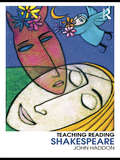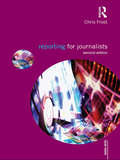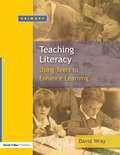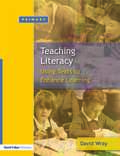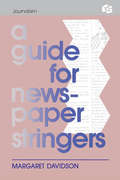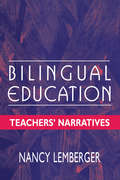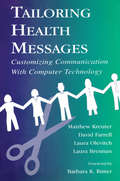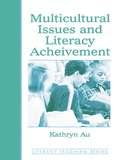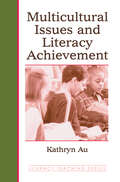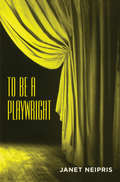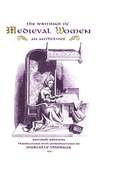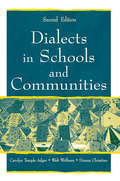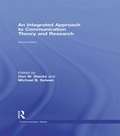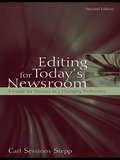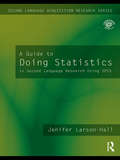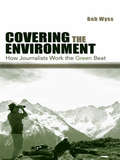- Table View
- List View
Teaching Reading Shakespeare
by John HaddonTeaching Reading Shakespeare is warmly and clearly communicated, and gives ownership of ideas and activities to teachers by open and explicit discussion. John Haddon creates a strong sense of community with teachers, raising many significant and difficult issues, and performing a vital and timely service in doing so. - Simon Thomson, Globe Education, Shakespeare’s Globe John Haddon offers creative, systematic and challenging approaches which don’t bypass the text but engage children with it. He analyses difficulty rather than ignoring it, marrying his own academic understanding with real sensitivity to the pupils’ reactions, and providing practical solutions. - Trevor Wright, Senior Lecturer in Secondary English, University of Worcester, and author of 'How to be a Brilliant English Teacher', also by Routledge. Teaching Reading Shakespeare is for all training and practising secondary teachers who want to help their classes overcome the very real difficulties they experience when they have to ‘do’ Shakespeare. Providing a practical and critical discussion of the ways in which Shakespeare’s plays present problems to the young reader, the book considers how these difficulties might be overcome. It provides guidance on: confronting language difficulties, including ‘old words’, meaning, grammar, rhetoric and allusion; reading the plays as scripts for performance at Key Stage 3 and beyond; using conversation analysis in helping to read and teach Shakespeare; reading the plays in contextual, interpretive and linguistic frameworks required by examinations at GCSE and A Level. At once practical and principled, analytical and anecdotal, drawing on a wide range of critical reading and many examples of classroom encounters between Shakespeare and young readers, Teaching Reading Shakespeare encourages teachers to develop a more informed, reflective and exploratory approach to Shakespeare in schools.
Reporting for Journalists
by Chris FrostReporting for Journalists explains the key skills needed by the twenty-first century news reporter. From the process of finding a story and tracing sources, to interviewing contacts, gathering information and filing the finished report, it is an essential handbook for students of journalism and a useful guide for working professionals. Reporting for Journalists explores the role of the reporter in the world of modern journalism and emphasises the importance of learning to report across all media – radio, television, online, newspapers and periodicals. Using case studies, and examples of print, online and broadcast news stories, the second edition of Reporting for Journalists includes: information on using wikis, blogs, social networks and online maps finding a story and how to develop ideas researching the story and building the contacts book including crowd sourcing and using chat rooms interactivity with readers and viewers and user generated content making best use of computer aided reporting (CAR), news groups and search engines covering courts, councils and press conferences reporting using video, audio and text preparing reports for broadcasting or publication consideration of ethical practice, and cultural expectations and problems an annotated guide to further reading, a glossary of key terms and a list of journalism websites and organisations.
Reporting for Journalists
by Chris FrostReporting for Journalists explains the key skills needed by the twenty-first century news reporter. From the process of finding a story and tracing sources, to interviewing contacts, gathering information and filing the finished report, it is an essential handbook for students of journalism and a useful guide for working professionals. Reporting for Journalists explores the role of the reporter in the world of modern journalism and emphasises the importance of learning to report across all media – radio, television, online, newspapers and periodicals. Using case studies, and examples of print, online and broadcast news stories, the second edition of Reporting for Journalists includes: information on using wikis, blogs, social networks and online maps finding a story and how to develop ideas researching the story and building the contacts book including crowd sourcing and using chat rooms interactivity with readers and viewers and user generated content making best use of computer aided reporting (CAR), news groups and search engines covering courts, councils and press conferences reporting using video, audio and text preparing reports for broadcasting or publication consideration of ethical practice, and cultural expectations and problems an annotated guide to further reading, a glossary of key terms and a list of journalism websites and organisations.
Teaching and Learning Literacy: Reading and Writing Texts for a Purpose
by David WrayDavid Wray offers a range of practical suggestions for enhancing literacy work in primary and secondary schools (KS 1-3). The book is based on the idea that the purpose of literacy teaching is to enable pupils to understand and create meaningful, whole texts. It deliberately takes a cross-curricular view of literacy and will appeal to teachers who specialize in a range of subjects. It also explores in-depth the processes involved in both understanding and composing a range of text types, avoiding the temptation to segment literacy skills, thereby losing sight of the overall purpose. The book is aimed at primary teachers and student teachers with an interest in extending their pupils' experiences of texts across the curriculum; and at secondary teachers (especially English teachers) who wish to include in their subject teaching more explicit attention to their pupils' literacy skills.
Teaching and Learning Literacy: Reading and Writing Texts for a Purpose
by David WrayDavid Wray offers a range of practical suggestions for enhancing literacy work in primary and secondary schools (KS 1-3). The book is based on the idea that the purpose of literacy teaching is to enable pupils to understand and create meaningful, whole texts. It deliberately takes a cross-curricular view of literacy and will appeal to teachers who specialize in a range of subjects. It also explores in-depth the processes involved in both understanding and composing a range of text types, avoiding the temptation to segment literacy skills, thereby losing sight of the overall purpose. The book is aimed at primary teachers and student teachers with an interest in extending their pupils' experiences of texts across the curriculum; and at secondary teachers (especially English teachers) who wish to include in their subject teaching more explicit attention to their pupils' literacy skills.
A Guide for Newspaper Stringers
by Margaret DavidsonFirst Published in 1990. Routledge is an imprint of Taylor & Francis, an informa company.
A Guide for Newspaper Stringers
by Margaret DavidsonFirst Published in 1990. Routledge is an imprint of Taylor & Francis, an informa company.
Bilingual Education: Teachers' Narratives
by Nancy LembergerThis book grew out of the joys and challenges the author experienced as a Spanish/English bilingual teacher of culturally and linguistically diverse students. It tells what it is like to be a bilingual teacher. As a result, it helps other teachers and prospective teachers understand the complex nature of bilingual teaching, shares some successful teaching strategies that other teachers have used, and encourages teachers to find their own solutions despite limited support. The book is structured in three parts. The introduction explains how the book evolved, defines its relation to other qualitative research, and offers suggestions for how to use the book. The second part consists of eight bilingual teachers' stories that provide a glimpse of them as people, their schools and programs, their successes and struggles, and their solutions and coping mechanisms within their contexts. It concludes with a discussion chapter that looks at the teachers' collective strengths and struggles comparatively, connecting these to broader issues. The final section presents bilingual education resources -- useful information for practitioners. This includes foundation texts on the theories and practices of bilingual education, demographic information, a glossary of bilingual education terms, listings of curricula, tests, and literature mentioned by the teachers, and professional network sources.
Bilingual Education: Teachers' Narratives
by Nancy LembergerThis book grew out of the joys and challenges the author experienced as a Spanish/English bilingual teacher of culturally and linguistically diverse students. It tells what it is like to be a bilingual teacher. As a result, it helps other teachers and prospective teachers understand the complex nature of bilingual teaching, shares some successful teaching strategies that other teachers have used, and encourages teachers to find their own solutions despite limited support. The book is structured in three parts. The introduction explains how the book evolved, defines its relation to other qualitative research, and offers suggestions for how to use the book. The second part consists of eight bilingual teachers' stories that provide a glimpse of them as people, their schools and programs, their successes and struggles, and their solutions and coping mechanisms within their contexts. It concludes with a discussion chapter that looks at the teachers' collective strengths and struggles comparatively, connecting these to broader issues. The final section presents bilingual education resources -- useful information for practitioners. This includes foundation texts on the theories and practices of bilingual education, demographic information, a glossary of bilingual education terms, listings of curricula, tests, and literature mentioned by the teachers, and professional network sources.
Tailoring Health Messages: Customizing Communication With Computer Technology
by Matthew W. Kreuter David W. Farrell Laura R. Olevitch Laura K. BrennanThrough the use of new technologies, researchers, and practitioners in health education and health communication can now provide health information and behavior change strategies that are customized based on the unique needs, interests, and concerns of different individuals. These tailored health messages can be highly effective in assisting individuals in understanding and responding to health concerns. In this volume, Matthew Kreuter, David Farrell, and their colleagues define the process of tailoring and describe its uses in health communication programs. They present a theoretical and public health rationale for tailoring and support their position with empirical evidence. They also lay out the steps involved in creating and delivering tailored health communication programs, which can then be applied in practice. Practitioners, researchers, and students in health communication, health psychology, public health, and related areas will find this book to be a vital and invaluable resource for improving communication about health issues.
Tailoring Health Messages: Customizing Communication With Computer Technology
by Matthew W. Kreuter David W. Farrell Laura R. Olevitch Laura K. BrennanThrough the use of new technologies, researchers, and practitioners in health education and health communication can now provide health information and behavior change strategies that are customized based on the unique needs, interests, and concerns of different individuals. These tailored health messages can be highly effective in assisting individuals in understanding and responding to health concerns. In this volume, Matthew Kreuter, David Farrell, and their colleagues define the process of tailoring and describe its uses in health communication programs. They present a theoretical and public health rationale for tailoring and support their position with empirical evidence. They also lay out the steps involved in creating and delivering tailored health communication programs, which can then be applied in practice. Practitioners, researchers, and students in health communication, health psychology, public health, and related areas will find this book to be a vital and invaluable resource for improving communication about health issues.
Multicultural Issues and Literacy Achievement
by Kathryn AuThis book is a sequel to the author's earlier volume entitled, Literacy Instruction in Multicultural Settings. In addition to extensive updating of earlier material, this book extends the content coverage to include issues of power, attitudes, and systemic change through the application of discourse theory and critical theory. In doing so, however, the author has tried to maintain the brevity, stylistic clarity, and classroom focus of the earlier volume.Key features of this important new book include:*Teaching Flexibility. Although written with the classroom needs of pre-service teachers in mind, theory and research are treated in sufficient depth to make the book suitable for graduate courses and for teacher study groups.*Issues Organization. Each chapter is organized around familiar issues that characterize schools and classrooms with diverse student populations and explores these issues through new lenses that most teachers have not previously encountered.*Social Constructivist Perspective. Critical theory, discourse theory, and historical perspective are introduced in order to sensitize readers to the need to recognize negative, socially sustained patterns that hamper literacy achievement and replace them with positive patterns. To this end each chapter asks students to maintain a running list of negative patterns along with alternative positive patterns.
Multicultural Issues and Literacy Achievement
by Kathryn AuThis book is a sequel to the author's earlier volume entitled, Literacy Instruction in Multicultural Settings. In addition to extensive updating of earlier material, this book extends the content coverage to include issues of power, attitudes, and systemic change through the application of discourse theory and critical theory. In doing so, however, the author has tried to maintain the brevity, stylistic clarity, and classroom focus of the earlier volume.Key features of this important new book include:*Teaching Flexibility. Although written with the classroom needs of pre-service teachers in mind, theory and research are treated in sufficient depth to make the book suitable for graduate courses and for teacher study groups.*Issues Organization. Each chapter is organized around familiar issues that characterize schools and classrooms with diverse student populations and explores these issues through new lenses that most teachers have not previously encountered.*Social Constructivist Perspective. Critical theory, discourse theory, and historical perspective are introduced in order to sensitize readers to the need to recognize negative, socially sustained patterns that hamper literacy achievement and replace them with positive patterns. To this end each chapter asks students to maintain a running list of negative patterns along with alternative positive patterns.
To Be a Playwright
by Janet NeiprisFirst Published in 2006. Routledge is an imprint of Taylor & Francis, an informa company.
To Be a Playwright
by Janet NeiprisFirst Published in 2006. Routledge is an imprint of Taylor & Francis, an informa company.
The Writings of Medieval Women, 2nd Edition: An Anthology (Library of Medieval Literature)
by Marcelle Theibaux"Royal and saintly women are well-represented here, with the welcome addition of women from the Mediterranean arc...Garland has done a solid job of presenting this book." -- Arthuriana"The Anthology gives a fine sense of the great range of women's writing in the Middle Ages." -- Medium Aevum
Dialects in Schools and Communities
by Carolyn Temple Adger Walt Wolfram Donna ChristianThis book describes dialect differences in American English and their impact on education and everyday life. It explores some of the major issues that confront educational practitioners and suggests what practitioners can do to recognize students’ language abilities, support their language development, and expand their knowledge about dialects. Topics addressed include:*popular concerns about the nature of language variation;*characteristic structures of different dialects;*various interactive patterns characteristic of social groups;*the school impacts of dialect differences in speaking, writing, and reading, including questions about teaching Standard English; and*the value of dialect education in schools to enable students to understand dialects as natural and normal language phenomena. Changes in the Second Edition: In this edition the authors reconsider and expand their discussion of many of the issues addressed in the first edition and in other of their earlier works, taking into account especially the research on dialects and publications for audiences beyond linguistics that have appeared since the first edition. This edition is offered as an updated report on the state of language variation and education in the United States. Dialects in Schools and Communities is rooted in questions that have arisen in workshops, surveys, classes, discussion groups, and conversations with practitioners and teacher educators. It is thus intended to address important needs in a range of educational and related service fields. As an overview of current empirical research, it synthesizes current understandings and provides key references—in this sense it is a kind of translation and interpretation in which the authors’ goal is to bring together the practical concerns of educators and the vantage point of sociolinguistics. No background in linguistics or sociolinguistics is assumed on the part of the reader. This volume is intended for teacher interns and practicing teachers in elementary and secondary schools; early childhood specialists; specialists in reading and writing; speech/language pathologists; special education teachers; and students in various language specialties.
Dialects in Schools and Communities
by Carolyn Temple Adger Walt Wolfram Donna ChristianThis book describes dialect differences in American English and their impact on education and everyday life. It explores some of the major issues that confront educational practitioners and suggests what practitioners can do to recognize students’ language abilities, support their language development, and expand their knowledge about dialects. Topics addressed include:*popular concerns about the nature of language variation;*characteristic structures of different dialects;*various interactive patterns characteristic of social groups;*the school impacts of dialect differences in speaking, writing, and reading, including questions about teaching Standard English; and*the value of dialect education in schools to enable students to understand dialects as natural and normal language phenomena. Changes in the Second Edition: In this edition the authors reconsider and expand their discussion of many of the issues addressed in the first edition and in other of their earlier works, taking into account especially the research on dialects and publications for audiences beyond linguistics that have appeared since the first edition. This edition is offered as an updated report on the state of language variation and education in the United States. Dialects in Schools and Communities is rooted in questions that have arisen in workshops, surveys, classes, discussion groups, and conversations with practitioners and teacher educators. It is thus intended to address important needs in a range of educational and related service fields. As an overview of current empirical research, it synthesizes current understandings and provides key references—in this sense it is a kind of translation and interpretation in which the authors’ goal is to bring together the practical concerns of educators and the vantage point of sociolinguistics. No background in linguistics or sociolinguistics is assumed on the part of the reader. This volume is intended for teacher interns and practicing teachers in elementary and secondary schools; early childhood specialists; specialists in reading and writing; speech/language pathologists; special education teachers; and students in various language specialties.
An Integrated Approach to Communication Theory and Research
by Don W. Stacks Michael B. SalwenThis volume provides an overview of communication study, offering theoretical coverage of the broad scope of communication study as well as integrating theory with research. To explicate the integration process, the chapter contributors -- experts in their respective areas -- offer samples in the form of hypothetical studies, published studies, or unpublished research, showing how theory and research are integrated in their particular fields. The book will appeal to graduate students and faculty members who want a thorough overview of not only the field, but also sample research stemming from its various component parts.
An Integrated Approach to Communication Theory and Research
by Don W. Stacks Michael B. SalwenThis volume provides an overview of communication study, offering theoretical coverage of the broad scope of communication study as well as integrating theory with research. To explicate the integration process, the chapter contributors -- experts in their respective areas -- offer samples in the form of hypothetical studies, published studies, or unpublished research, showing how theory and research are integrated in their particular fields. The book will appeal to graduate students and faculty members who want a thorough overview of not only the field, but also sample research stemming from its various component parts.
Editing for Today's Newsroom: A Guide for Success in a Changing Profession
by Carl Sessions SteppEditing for Today's Newsroom provides training, support and advice for prospective news editors. Through history, analyses, and anecdotes, this book offers a solid grounding to prepare potential editors for the full range of their responsibilities in today's newsrooms: developing ideas; evaluating and editing copy; working with writers; determining what is news; understanding presentation and design; directing news coverage; managing people; making decisions under pressure; and coping with a variety of ethical, legal, and professional considerations, all while operating in today’s multimedia, multiplatform news arena. Author Carl Sessions Stepp focuses on editors as newsroom decision makers and quality controllers; accordingly, the book features strategies and techniques for coping with a broad spectrum of editing duties. Covering basic and advanced copyediting skills, it also provides intellectual context to the editor's role, critically examining the history of editing and the changing job of the contemporary editor.
Editing for Today's Newsroom: A Guide for Success in a Changing Profession
by Carl Sessions SteppEditing for Today's Newsroom provides training, support and advice for prospective news editors. Through history, analyses, and anecdotes, this book offers a solid grounding to prepare potential editors for the full range of their responsibilities in today's newsrooms: developing ideas; evaluating and editing copy; working with writers; determining what is news; understanding presentation and design; directing news coverage; managing people; making decisions under pressure; and coping with a variety of ethical, legal, and professional considerations, all while operating in today’s multimedia, multiplatform news arena. Author Carl Sessions Stepp focuses on editors as newsroom decision makers and quality controllers; accordingly, the book features strategies and techniques for coping with a broad spectrum of editing duties. Covering basic and advanced copyediting skills, it also provides intellectual context to the editor's role, critically examining the history of editing and the changing job of the contemporary editor.
A Guide to Doing Statistics in Second Language Research Using SPSS
by Jenifer Larson-HallThis valuable book shows second language researchers how to use the statistical program SPSS to conduct statistical tests frequently done in SLA research. Using data sets from real SLA studies, A Guide to Doing Statistics in Second Language Research Using SPSS shows newcomers to both statistics and SPSS how to generate descriptive statistics, how to choose a statistical test, and how to conduct and interpret a variety of basic statistical tests. It covers the statistical tests that are most commonly used in second language research, including chi-square, t-tests, correlation, multiple regression, ANOVA and non-parametric analogs to these tests. The text is abundantly illustrated with graphs and tables depicting actual data sets, and exercises throughout the book help readers understand concepts (such as the difference between independent and dependent variables) and work out statistical analyses. Answers to all exercises are provided on the book’s companion website, along with sample data sets and other supplementary material.
A Guide to Doing Statistics in Second Language Research Using SPSS
by Jenifer Larson-HallThis valuable book shows second language researchers how to use the statistical program SPSS to conduct statistical tests frequently done in SLA research. Using data sets from real SLA studies, A Guide to Doing Statistics in Second Language Research Using SPSS shows newcomers to both statistics and SPSS how to generate descriptive statistics, how to choose a statistical test, and how to conduct and interpret a variety of basic statistical tests. It covers the statistical tests that are most commonly used in second language research, including chi-square, t-tests, correlation, multiple regression, ANOVA and non-parametric analogs to these tests. The text is abundantly illustrated with graphs and tables depicting actual data sets, and exercises throughout the book help readers understand concepts (such as the difference between independent and dependent variables) and work out statistical analyses. Answers to all exercises are provided on the book’s companion website, along with sample data sets and other supplementary material.
Covering the Environment: How Journalists Work the Green Beat
by Robert L. WyssCovering the Environment serves as a primer for future and current journalists reporting on environmental issues across all types of media. This practical resource explains the primary issues in writing on the environment, identifies who to go to and where to find sources, and offers examples on writing and reporting the beat. It also provides background to help environmental journalists identify their audiences and anticipate reactions to environmental news. This primer emphasizes the role of environmental journalists not as environmental advocates but as reporters attempting to accurately and fairly report the news. Contents include: An overview and history of the environment and journalism, spotlighting the most significant issues in the beat Guidance on understanding environmental and health science, ranging from issues of risk, to scientific research and studies, to interviewing scientists Insights into government and regulatory communities and environmental advocates on all sides of the political spectrum Assistance in accessing public records and conducting computer-assisted reporting Guidance in writing the story for print, broadcast and Internet audiences An examination of the future of journalism and coverage of the environment. Observations and story excerpts from experienced journalists provide a "real world" component, illuminating the practice of environmental journalism. Additional features in each chapter include study questions, story assignments and resources for additional information. The book also provides a glossary of environmental, science, regulator and journalism terms, as well as a reference section and index. This resource has been developed to train advanced undergraduate and graduate journalism students to cover the science and environment community, writing print and broadcast stories to a general audience. It also serves as a guide for working journalists who cover the environment in their work.
